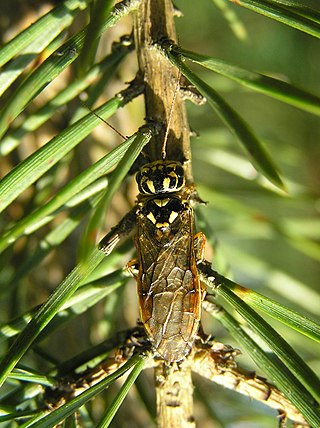Top Qs
Timeline
Chat
Perspective
Pamphiliidae
Family of sawflies From Wikipedia, the free encyclopedia
Remove ads
Pamphiliidae (sometimes incorrectly spelled Pamphilidae) is a small family within Symphyta, containing some 200 species from the temperate regions of North America and Eurasia. The larvae feed on plants (often conifers), using silk to build webs or tents, or to roll leaves into tubes in which they feed, thus earning them the common names leaf-rolling sawflies or web-spinning sawflies. Some species are gregarious and the larvae live in large groups. Fossils of Pamphiliidae have been dated to the Jurassic period.[1]
They are distinguished from the closely related Megalodontesidae by their simple, filiform antennae.
Remove ads
Taxonomy
The family is currently divided into three subfamilies based on phylogenetic analysis of both extant and extinct species.[2]
- Cephalciinae Benson, 1945
- Acantholyda Costa, 1894
- Caenolyda Konow, 1897
- Cephalcia Panzer, 1805
- Chinolyda Beneš, 1968
- Juralydinae
- Pamphiliinae Cameron, 1890
- Chrysolyda Shinohara, 2002
- Kelidoptera Konow, 1897
- Onycholyda Takeuchi, 1938
- Pamphilius Latreille, 1802
- Pseudocephaleia Zirngiebl, 1937
- Incertae sedis
Remove ads
References
External links
Wikiwand - on
Seamless Wikipedia browsing. On steroids.
Remove ads

